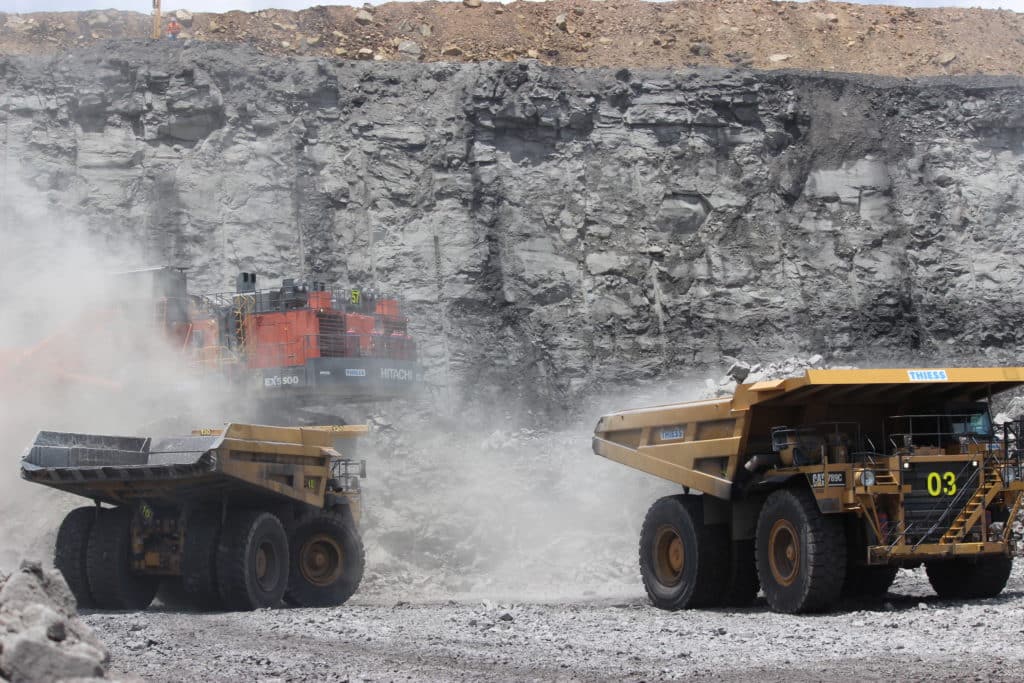
Moranbah is a township located in the Bowen basin in rural Queensland. The Bowen Basin is well known for its rich mineral deposits which are well-populated around Moranbah. At many of these nearby mine sites, there have been multiple complaints by workers to unions regarding the poor visibility as a result of the dust pollution. Over time as the mines became more active, the locals began to notice an increase in dust concentration in the resident town of Moranbah. Residents of Moranbah further became victim to the health impacts as a result of exposure to the dust, as many of those who suffer from conditions such as sinusitis noticed a severity in their symptoms. It is believed that the explosive nature of the mining processes, such as blasting and drilling causes this large quantity of dust to form and become suspended. The dust is then transported into the community by windy conditions that are common in the area. The concern is the concentration of PM10 (PM10 are airborne particles that are less than 10 micrometres in diameter) in the town which could potentially have long term health impacts on residents or workers. These particles are capable of causing lung disease, asthma and respiratory infections.
The Department of Environment and Science released a document claiming that the annual average levels of microscopic dust, known as PM10 were indeed consistently above the state’s guidelines at Moranbah. In 2018, PM10 dust concentrations levels were monitored over a 24-hour average period. It was documented that within this 24-hour period there were over 19 exceedances in concentrations, with levels at times reaching over 20% the normal limit. When measuring for dust conditions, the wind direction and speed were measured to monitor contribution to the level of PM10 in the community relative to the location of the mine sites.
Rural Queensland is quite well known for its dusty, dry conditions however, the dust concentrations that are currently found at Moranbah are far above normal. The Department of Environment has commented and has blamed the excess dust concentration to below-average rainfall, and dry conditions, which have resulted in an increase in dust storms and bushfire smoke, as well as increased hazard reductions. Meanwhile, the Queensland Resource Council chief executive Ian Macfarlane has supported the Department of Environments statement by expressing that the industry is governed by “rigorous health and safety regulations”, suggesting that the appropriate precautions for dust control are currently being executed. However, the community is not satisfied with how little is being done to contain the issue, especially with the clear indication of a breach in dust levels found in the Department of Environment’s report. There are also concerns from the public of Moranbah for PM2.5 dust which is characterised as a finer form of dust (dust particles size that is less than 2.5 micrometres in diameter), and is even more dangerous than PM10 due to its smaller particle size, as it can affect blood circulation, increase the risk of heart disease, vascular disease, blood vessel disease, stroke and heart attacks.
This case is a clear example where we see the extent of damage and disruption that dust is capable of inflicting on not only to a mining environment but also close residing towns. Some residents of Moranbah had to resort to relocation and travelled over 200km away specifically due to the impact of the dust on their health. As the mining industry is one of Australia’s largest businesses, it is unlikely that mining in the Bowen region will cease any time soon, even with a wide range of complaints. Hence, it is critical that the mining industry works alongside the Moranbah residents to overcome this dust pollution issue, rather than pointing the finger, or delaying action. The relationship between the mining industry and Moranbah is potentially prosperous for both parties with the influx of money coming from these large companies, and the number of values of ore in the Bowen Basin. The only barrier identified is the impact of dust. There are practical, cost-effective and efficient methods of dealing with dust suspension that is available on the market today that is capable of restoring the relationship between these two parties.
The case presented here at Moranbah is only one of many scenarios where Global Road Technology (GRT) is able to mediate against dust propagation in a mining context. GRT offers a range of products that can be utilised on standing stockpiles, dust suspension reduction from rigorous mining processes, and chemically engineered polymers that are able to be sprayed onto roads to minimise dust suspension from heavy or light mining vehicles. The range of applications is applicable to a variety of contexts, including open mine and underground mine dust suppression. This technology is capable of trapping and capturing large quantities of dust for extended periods of time to minimise dust distribution and hence impact on the community.
Are environmental regulations, health and safety concerns or potential profit loss a concern right now?
Contact Us Now